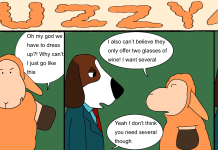“Devil in the White City” by Erik Larson
Chicago, like all great cities, contains the best and worst of humankind. Man’s great dreams and achievements stand like shadows next to man’s great failures. Devil in the White City by Erik Larson captures the essence of man’s greatness in the contrast between the Columbian World Exposition of 1893 and the murders conducted in the summer of the fair’s reign by a man known as Dr. H. H. Holmes.
The World’s Fair, as the Columbian Exposition became known, represents one of the crowns in Chicago’s history. This “White City” was a dream world – a collective imagining by America’s greatest architects of the time, including landscape architect Frederick Olmsted (the man who designed Central Park in New York) and director-architect Daniel Burnham.
Erik Larson paints a picture of this beautiful city where cutting edge light bulb technology meets shredded wheat and Cracker Jacks. Annie Oakley performs impossible feats just outside the fair in Buffalo Bill’s Wild West Show and silent boats float through the lagoons among neoclassical style buildings. People were invited to ride George Ferris’ wheel, a risky but marvelous business. How lovely to remember Ferris’ wife letting out a yell as her car, which fit almost thirty passengers, reached the top for the first time.
“The Wizard of Oz” writers based Oz off this dream; Walt Disney based his Disneyland and Disneyworld kingdoms off his father’s musings about constructing the White City. People must have truly felt they were walking through a fairytale.
Yet the White City’s fairytale had a villain. In the same pages as he describes the construction of the White City, Larson describes the way Holmes built his own hotel in the Engleside neighborhood where the fair was housed. Larson describes the way Holmes’ hotel happened to be booked when men inquired about rooms but was always available for young women. He describes the way these young women mysteriously disappeared, leaving behind only by letters of inquiry from their families in rural Iowa or southern Illinois. Most vividly, Larson describes the footprint of one such young woman found in what police assumed was Holmes’ gas chamber, marked forever on the panel by some strange form of acid.
The woman was trying to escape.
Architects have that rare role in humankind where they must not only imagine a new place but ensure its existence in reality. Metaphorically, it is the people who take their visions and dreams and make them real – the businessmen and their plans, the engineers and their products, the politicians and their laws, the artist and their scores of music – that are the true innovators and leaders of humanity. Daniel Burnham marked himself as such a leader as he created the White City from his dreams. Holmes became a leader (in a much different sense) as he killed many more people in a more perverse way than anyone else in recent history.
I read “Devil in the White City” to hear about the Exposition: Its the architecture, its creation, its beauty, its significance in American history. Yet, Holmes’ story is as enthralling as the story of the White City, albeit much more terrifying. Perhaps the most captivating part of the entire book is that Holmes’ pursuit toward his dream is so similar to Burnham’s. It takes a certain amount of pride in a person to think that they can achieve where others have failed or to think they can achieve anything great at all. Yet that pride, once there, results in so slim a difference between great achievements and terrible downfalls.
Chicago is a proud city; architecture, presidents, great crime organizations, lying politicians, will continue to be wrought in its wretched, beautiful limits. We will continue to breathe in the cities in which we live and hope, perhaps, that we ourselves may have the gusto necessary to create something as beautiful (or as terrible) as Erik Larson describes in “Devil in the White City”. That inherent thrill of well-written non-fiction is that the events described not only could happen, but they did. So of course they could happen again.
And that is a terrifying – and thrilling – thought.



































Absolutely outstanding synopsis of the crux of the story! Better yet, extremely perceptive observations of the passions of two large, albeit very different, men. And I especially appreciate how you describe the “true innovators and leaders of humanity.” Keep up the great work!